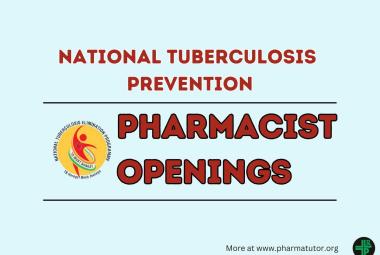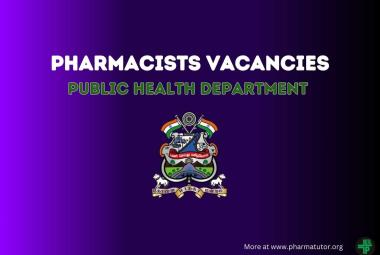Guillain-Barre syndrome (GBS) is an autoimmune disease. It's a rare neurological disorder that occurs when the body's immune system attacks its own peripheral nerves that carry signals from the brain and spinal cord to the rest of the body.
GBS begins suddenly and can increase in intensity over a period of hours, days, or weeks until certain muscles cannot be used at all. Some cases of GBS are very mild and only marked by brief weakness. Others cause nearly devastating paralysis, leaving the person unable to breathe on their own. In these cases, the disorder is life-threatening—potentially interfering with breathing, blood pressure, or heart rate. Fortunately, most people eventually recover from even the most severe cases of GBS. After recovery, people may continue to have some weakness.
Symptoms of Guillain-Barré syndrome
• Weakness: The weakness seen in GBS usually comes on quickly and worsens over hours or days. Often, feet are affected first, and weakness may move up the body to eventually impact the legs, arms, face, and breathing muscles. The person may first notice unexpected difficulty climbing stairs or walking. Less commonly, symptoms start in the face and move down to the legs and feet. Most people reach the greatest stage of weakness within the first two weeks after symptoms appear; by the third week 90% of affected people are at their weakest.
• Sensation changes: In GBS, the brain may receive abnormal sensory signals from the rest of the body due to the nerve damage associated with the condition. This results in unexplained, spontaneous sensations, called paresthesias, that the person may feel as tingling, a sense of insects crawling under the skin (called formications), and pain. Some people with GBS feel a deep muscular pain in the back and/or legs. Unexplained sensations often happen first, such as tingling in the feet or hands, or even pain (especially in children), often starting in the legs or back. Children will also begin to have difficulty walking and may refuse to walk. These sensations tend to disappear before the major, longer-term symptoms appear.
Other symptoms of Guillain-Barré syndrome may include :
• Difficulty with eye muscles and vision
• Difficulty swallowing, speaking, or chewing
• Pricking or pins and needles in the hands and feet
• Pain that can be severe, particularly at night
• Coordination problems and unsteadiness
• Abnormal heart rate or blood pressure
• Problems with digestion and/or bladder control
The body’s nerves have a central conducting core called the axon that carries an electric signal. The axon is surrounded by an insulating layer (or sheath) called myelin. The myelin sheath surrounding the axon speeds up the transmission of nerve signals and allows the transmission of signals over long distances. In the most common type of GBS, called acute inflammatory demyelinating polyradiculoneuropathy (AIDP), the immune system damages the myelin sheath. In two other types of GBS, called acute motor axonal neuropathy (AMAN) and acute motor-sensory axonal neuropathy (AMSAN), the immune system may damage the axons themselves. As a result, the nerves cannot transmit signals efficiently and the muscles begin to lose their ability to respond to the brain's commands, which causes weakness and abnormal or no reflexes.
Miller Fisher syndrome is another type of GBS involving the cranial nerves, which extend from the brain to areas of the head and neck. The main symptoms are weakness or paralysis of the muscles that move the eyes, problems with balance and coordination, and abnormal or no reflexes. People with this disorder may have other common GBS symptoms like muscle weakness.
Who is more likely to get Guillain-Barré syndrome?
GBS can affect anyone of any gender or age, but most often affects adults and people older than 50. GBS is not contagious or inherited and the exact cause is unknown.
Since the body's own immune system does the damage, GBS is called an autoimmune disease (“auto” meaning “self”). Normally the immune system uses antibodies (molecules produced in an immune response) and special white blood cells to protect us by attacking infecting bacteria and viruses. In GBS, however, the immune system mistakenly attacks the healthy nerves. This attack may start as a fight against an infection. One possible reason for this is that some chemicals seen on bacteria and viruses resemble those on nerve cells. The immune system may not be able to distinguish bacteria and viruses from healthy nerve cells which also become targets of attack.
GBS usually starts a few days or weeks following a respiratory or gastrointestinal bacterial or viral infection. One of the most common risk factors for GBS is infection with the bacteria Campylobacter jejuni, which causes gastroenteritis (including nausea, vomiting, and diarrhea). Sometimes, surgery will trigger the syndrome. In very rare cases certain vaccinations may increase the risk of GBS. Some countries worldwide reported an increased incidence of GBS following infection with the COVID-19, Zika, cytomegalovirus, or Epstein-Barr viruses.
How is Guillain-Barré syndrome diagnosed and treated?
Diagnosing GBS
Cases of GBS begin differently for different people, and there are several disorders with similar symptoms. Therefore, it may be difficult to diagnose GBS in its earliest stages. Doctors may perform the following:
• History and physical exam: A doctor will perform a physical exam and review the person’s medical history. They will assess how the person’s muscles and nerves are working. The doctor will note whether symptoms appear on both sides of the body (which is typical in GBS) and how fast the symptoms appeared. This is helpful because in other disorders, muscle weakness may progress over months rather than days or weeks. They will also check the reflexes, as some reflexes are lost in people with GBS.
• Nerve conduction velocity test (NCV): This test measures the nerve's ability to send a signal. In GBS, the signals traveling along the damaged nerves are slowed because of damage to the myelin sheath.
• Cerebrospinal fluid analysis: A doctor may also conduct an analysis of the cerebrospinal fluid that bathes the spinal cord. This fluid contains more protein and fewer immune cells in people with GBS.
• Imaging: In some cases, an MRI (magnetic resonance imaging) of the spinal cord or even brain may help find any other potential causes of muscle weakness.
Treating GBS
Currently, there is no cure for GBS. However, some therapies can reduce its severity and shorten recovery time. There are also several ways to treat the complications of the disease.
People with GBS are usually admitted to the hospital and treated in the intensive care unit due to possible complications of muscle weakness. At the hospital, people with GBS are closely monitored to track the progression of their muscle weakness, breathing, and heart rate. If an intervention is needed, it can be quickly provided by the hospital staff.
Acute care for Guillain-Barré syndrome
Two treatments are commonly used to interrupt immune-related nerve damage. Both are equally effective if started within two weeks of GBS symptoms.
• Plasma exchange (PE), also called plasmapheresis, involves removing some blood through a catheter. Plasma (the liquid part of the blood) is separated from the blood cells. These cells, along with replacement fluid, are returned to the body. PE may work by removing the bad antibodies in the plasma that have been damaging the nerves.
• Intravenous immunoglobulin therapy (IVIg) involves injections of immunoglobulins—proteins that your immune system naturally makes to attack infecting organisms. The immunoglobulins are developed from a pool of thousands of healthy donors. IVIg can lessen the immune attack on the nervous system and shorten recovery time. Researchers believe this treatment also reduces the effectiveness of antibodies that attack the nerves by both “diluting” them with non-specific antibodies and reducing the number of harmful antibodies.
Anti-inflammatory steroid hormones called corticosteroids have also been tried to reduce the severity of GBS, but clinical trials have shown this treatment is not effective.
Supportive care is very important to address the many complications of paralysis as the body recovers and damaged nerves begin to heal. Since respiratory failure can occur in GBS, a person’s breathing should be closely monitored. Sometimes a mechanical ventilator is used to help support or control breathing. The autonomic nervous system (that regulates the functions of internal organs and some of the muscles in your body) can also be disturbed, causing changes in heart rate, blood pressure, digestion, or sweating, so the person should be put on a heart monitor or other equipment that measures and tracks body function. If the person has problems swallowing, they may also need special care to prevent choking, which can cause pneumonia.
Rehabilitative care
As people with GBS begin to improve, they may be transferred from the acute care unit at a hospital to a rehabilitation setting. They can receive physical rehabilitation and other therapy to regain strength and resume activities of daily living.
Because GBS can affect several parts of the body, different methods and approaches may be needed to prevent or treat complications. For example, a physical therapist can manually move and position the person’s limbs to help keep the muscles flexible and prevent muscle shortening. Muscle strength may not return in the same way. Muscles that get stronger faster may take over a function that weaker muscles normally perform (this process is called substitution). A physical therapist can select specific exercises to improve the strength of weaker muscles so their original function can be regained.
Occupational and vocational therapy can help people learn new ways to handle everyday functions that may be affected. They can also help the person manage work demands and identify the need for assistive devices and other adaptive equipment and technology.
Long-term outlook for people with GBS
GBS can be a devastating disorder because of its sudden and rapid, unexpected onset of weakness—and often paralysis. Fortunately, most people with GBS have a full recovery. With careful intensive care and successful treatment of infection, autonomic dysfunction, and other medical complications, even people who have respiratory failure usually survive.
Recovery can be slow–anywhere from a few weeks to a few years. Some people do not recover completely and experience long-term weakness, numbness, fatigue, or pain. People recovering from GBS may face physical challenges and emotionally painful periods. It can be extremely difficult to adjust to sudden paralysis and dependence on others for help with routine daily activities. Some people with GBS need mental health counseling to help them adapt. Support groups can often ease emotional strain and provide valuable information.











